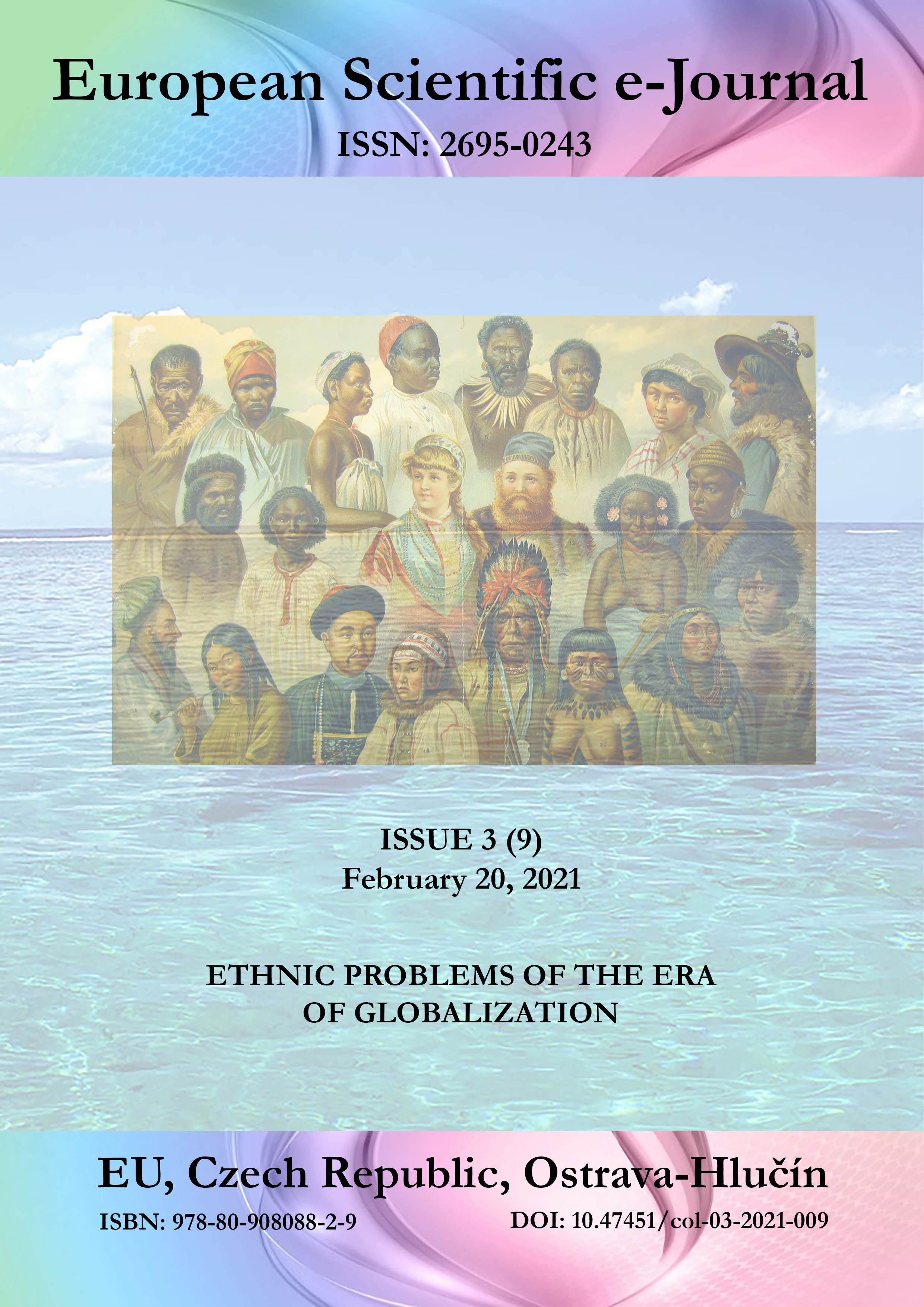The Genesis of Ethnic Relations between the Peoples of the European Union on the Example of the Italian Society’s Transformation in the Middle Ages
DOI:
https://doi.org/10.47451/eth2021-01-004Keywords:
European ethnic groups, Roman Empire, Holy Empire, Italy, Apennine PeninsulaAbstract
The issues of historical parallelism of events are relevant at all times because researchers are trying to find cyclically repeated processes in history that help to analyze the course of these processes at the present stage of society’s development, extrapolating the past to the present. The problems of the relationship of nations in the European Union, which are carefully veiled by the EU leadership, have historically ancient origins in the struggle for territories, resources, logistical benefits and political alliances. The genesis of these contradictions is clearly shown in the example of Italy as the heiress of the Roman Empire. The study aimed to identify the complex influence of ethnic migration processes that affected the Apennine Peninsula in the period from the 4th to the 12th centuries, which led to a deep social, economic and political transformation of Italian society and the creation of a basis for relations with neighbouring peoples. The origins of ethnic and cultural contradictions laid down in the period from the 4th to the 12th centuries formed in the local first nations a fairly stable wariness and relative negativism towards neighbouring ethnic groups that became descendants of migrants from the Early and Upper Middle Ages from the East and North. To solve these problems, historical, social and economic, comparative and logical research methods were used, which helped draw the necessary conclusions and conclusions. The materials of the article are intended for scientists, students and researchers in the field of the ethnology of Europe and the Apennine Peninsula.
Downloads
References
Barber, M. (1992). The Two Cities: Medieval Europe 1050–1320. London: Routledge.
Buychik, A. (2004). The Civilization Space of Italy: Economy and Politics. Book 1. Ancient World, the Middle Ages, Renaissance and Enlightenment. Northern-Western Research Institute of Cultural and Natural Heritage. St. Petersburg: North West Research Institute of Cultural and Natural Heritage. (In Russ.)
Buychik, A. (2015). Fundamentals of the Theory of wave dualism of ocracy (power). In “Philosophy: Educational Material”. Chapter 17. “The Philosophy of the 21st Century”. St. Petersburg: Publishing House SPbCS. (In Russ.)
Buychik, A., & Golikov, A. (2016). Civilization Space of Italy: Economy, Political Institutes and Person in Philosophical, Political and Legal Thought. (2nd ed.) St. Petersburg: North West Research Institute of Cultural and Natural Heritage. (In Russ.)
Cantor, N. F. (1991). Inventing the Middle Ages: The Lives, Works, and Ideas of the Great Medievalists of the Twentieth Century. New York: W. Morrow.
Collins, R. (1999). Early Medieval Europe: 300–1000 (2nd ed.). New York: St Martin’s Press.
Curta, F. (2006). Southeastern Europe in the Middle Ages 500–1250. Cambridge Medieval Textbooks. Cambridge: Cambridge University Press.
Davies, N. (1996). Europe: A History. Oxford: Oxford University Press.
Epstein, S. A. (2009). An Economic and Social History of Later Medieval Europe, 1000–1500. Cambridge: Cambridge University Press.
Geary, P. J. (1988). Before France and Germany: The Creation and Transformation of the Merovingian World. Oxford: Oxford University Press.
Gurevich, A. (1992). (Ed.). Historical Anthropology of the Middle Ages. Chicago: University of Chicago Press.
Henderson, G. (1977). Early Medieval. New York: Penguin.
Holmes, G. (Ed.). (2001). The Oxford Illustrated History of Medieval Europe. Oxford, UK: Oxford University Press.
James, E. (2009). Europe’s Barbarians: AD 200–600. The Medieval World. Harlow: Pearson Longman.
Jordan, W. C. (2003). Europe in the High Middle Ages. Penguin History of Europe. New York: Viking.
Loyn, H. R. (Ed.) (1991). The Middle Ages: A Concise Encyclopedia. London: Thames and Hudson.
Martin, J. (1993). Medieval Russia 980–1584. Cambridge Medieval Textbooks. Cambridge: Cambridge University Press.
Pounds, N. J. G. (1990). An Historical Geography of Europe. Cambridge: Cambridge University Press.
Power, D. (2006). The Central Middle Ages: Europe 950–1320. The Short Oxford History of Europe. Oxford: Oxford University Press.
Singman, J. L. (1999). Daily Life in Medieval Europe. Daily Life Through History. Westport: Greenwood Press.
Thomson, J. A. F. (1998). The Western Church in the Middle Ages. London: Arnold.
Watts, J. (2009). The Making of Polities: Europe, 1300–1500. Cambridge Medieval Textbooks. Cambridge: Cambridge University Press.
Wickham, C. (2009). The Inheritance of Rome: Illuminating the Dark Ages 400–1000. New York: Penguin Books.
Published
Issue
Section
License
Copyright (c) 2025 European Scientific e-Journal

This work is licensed under a Creative Commons Attribution 4.0 International License.
The European Scientific e-Journal (ESEJ) is an open access journal. Articles are available free of charge as PDF files on the website of the European Institute for Innovation Development. PDF files can be previewed with Acrobat Reader from www.adobe.com.
All articles of the “Tuculart Student Scientific” are published under a Creative Commons Attribution 4.0 Generic (CC BY 4.0) International license.
According to the Creative Commons Attribution 4.0 Generic (CC BY 4.0) International license, the users are free to Share — copy and redistribute the material in any medium or format for any purpose, even commercially (the licensor cannot revoke these freedoms as long as you follow the license terms).
Under the following terms:
- Attribution — You must give appropriate credit, provide a link to the license, and indicate if changes were made. You may do so in any reasonable manner, but not in any way that suggests the licensor endorses you or your use.
- No additional restrictions — You may not apply legal terms or technological measures that legally restrict others from doing anything the license permits.


